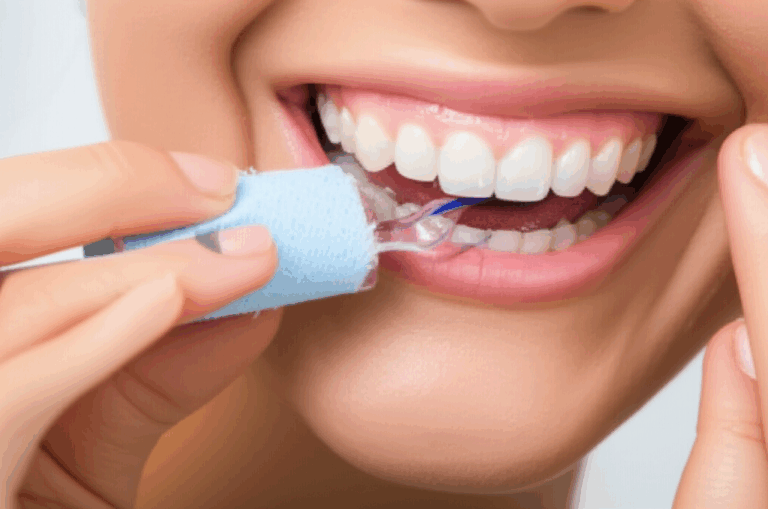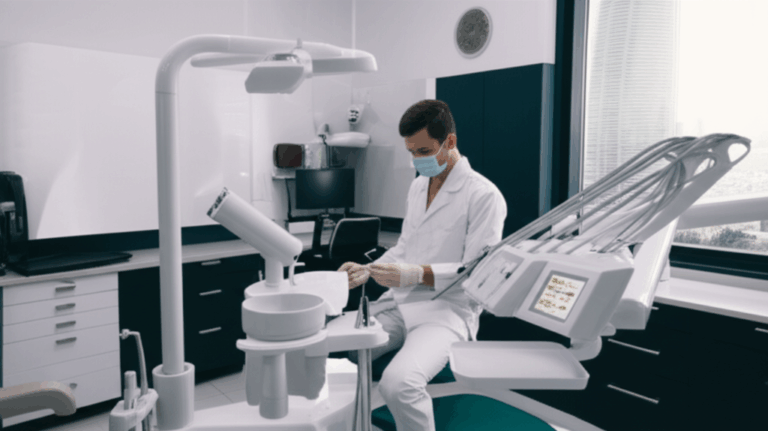
When Does Swelling Go Down After a Dental Implant?
Your Complete Recovery Timeline & Care Guide
Is Swelling After a Dental Implant Normal? (The Relatable Hook)
You just came home after dental implant surgery. You’re watching TV, maybe looking at your phone, and all of a sudden your cheek feels a little puffy. You check the mirror and, sure enough, there’s some swelling starting up. Like most people, you’re wondering: Is this normal—and how long will it last?
Take a deep breath—you’re not alone. Swelling after dental implant surgery is totally normal, and it usually just means your body is fixing itself. In fact, the “chipmunk cheeks” look is pretty much something everyone who gets an implant goes through.
In this guide, we’ll answer the real question you’re asking: When does swelling go down after a dental implant? We’ll walk through the regular recovery timeline, give you some simple tips to help you feel better, talk about warning signs you shouldn’t ignore, and help you get back to eating, smiling, and enjoying your life.
In This Article
Here’s what we’ll talk about, so you can jump to the answers you need:
- What Is Actually Happening? (Why You Swell Up)
- The Usual Swelling Timeline After Getting a Dental Implant
- What Makes Swelling Last Longer or Go Away Faster?
- How Can You Make Swelling and Pain Better?
- Warning Signs: When Should You Call Your Dentist?
- What Does the Rest of Recovery Look Like? (The Whole Story)
- Your Healthy Takeaway (Quick Summary & What’s Next)
What Is Actually Happening? (Why You Swell Up)
Let’s make this simple. Why does your face puff up after you get a dental implant?
Easy Answer: Swelling (what doctors call “edema”) is your body’s way to heal. When you have surgery, like a dental implant, the small blood vessels in your gums and jaw leak a bit of fluid into nearby tissue. Your white blood cells come to protect and repair. That’s why your cheek, jaw, or gums get swollen for a while.
Think of it like firefighters dumping water on a little kitchen fire. The water (swelling) does what it needs to, so don’t worry if it looks a little puffy for a bit.
Dental Implant Basics:
A dental implant is a strong, fake tooth root—usually made from titanium—that your dentist or oral surgeon puts into your jawbone. It holds a new tooth, bridge, or denture. The procedure can be simple (just one implant) or a bit more, like when you need bone grafting to add support. It’s safe, normal, and works very well for most people.
Some swelling just comes with the territory, since your body is in “healing mode.” How long it stays? That depends, so keep reading.
The Usual Swelling Timeline After Getting a Dental Implant
Okay, so your face is swollen—now what? Here’s what you can expect, day by day.
Right After Surgery: Day 0-1 (The Calm Before It Gets Puffy)
In the first few hours after your surgery, you might think you got lucky. That’s because the numbing medicine is still working. As it wears off, you’ll start to see some swelling, maybe within the first 2 to 4 hours. For most people, it’s not too bad on the first day. You could feel some tightness where the implant is.
What’s helpful right now?
- Rest, use ice packs (20 minutes on, 20 minutes off), and prop your head up.
- Stay away from hot food or drinks for now, and don’t poke at the spot with your tongue!
Days 2-3: The Swelling Peaks (You Might Look Puffy)
This is when swelling usually gets to the biggest point, and it’s most obvious—this is the “peak” of healing. Your face might look rounder on the implant side, and some people see bruising show up, usually on the cheek or under the eye (especially with upper jaw implants).
Pain and discomfort? Mild to medium throbbing is common, but it should get better with painkillers your dentist gave you.
Quick tip:
Take it easy. Your body’s working hard—don’t do heavy exercise for a few days.
Days 4-7: Swelling Goes Down (You Start Looking Like Yourself Again)
Here’s the good part: By day four, most of the swelling goes down. Each day you’ll see and feel a bit more “normal.” Bruising, if you got any, will likely start fading from purple to yellow-green.
You can now use a warm compress instead of ice. Try a warm washcloth to help blood flow and let the last bit of swelling go away.
Try to smile in the mirror—it should be easier than before.
One to Two Weeks: Just a Little Tenderness Left
Near the end of week one, most swelling is gone. There might be just a little puffiness or soreness, especially if your surgery was big, included bone grafting, or if you got more than one implant. This is normal and should get better each day.
At this point, your gums are healing too, so you might see the skin at the surgery spot look or feel a little different. Just be gentle with your cleaning, and keep eating soft foods until your dentist says it’s okay.
After Two Weeks: Healing Inside (The Bone Gets to Work)
After two weeks, you shouldn’t see any swelling or feel obvious pain. Now, your jawbone and the implant are connecting in a process called osseointegration. This means new bone cells are growing around the implant to hold it tight.
You might forget all about the implant! Still, don’t miss follow-up visits to make sure all is fine.
Typical Swelling & Healing Timeline
| Stage | What You’ll Notice | What’s Normal? |
|---|---|---|
| Hours 1–24 | Swelling starting | Ice packs, rest help |
| Days 2–3 | Swelling and bruising peak | Puffy face, but gets better soon |
| Days 4–7 | Swelling goes down | Each day feels more normal |
| Week 2 | Tenderness left | Most swelling gone |
| Weeks 2 and more | No swelling you can see | Bone healing inside continues |
| Bruising | Days 2–4, fades by day 14 | Color changes as it heals |
What Makes Swelling Last Longer or Go Away Faster?
Just like a bruise, everyone’s body is different. Here are things that change how long you might feel puffy:
1. The Surgery
- Single vs. Multiple Implants: Only one implant, short surgery? Swelling is usually less. If you have more implants or a longer surgery, or more cutting, you’ll have more swelling, maybe for a day or two extra.
- Bone Grafting or Sinus Lift: If you needed your jawbone built up or your sinus lifted (for upper implants), your body has to heal more, so swelling can last a bit longer.
- Where the Implant Was: Implants in your upper jaw can swell under the eye or bruise your cheek. Lower jaw implants swell more along the jawline.
2. Your Body
- Age: Younger people heal faster than older people.
- Your General Health: Conditions like diabetes, immune problems, or even high blood pressure can slow healing.
- Smoking: If you smoke, sorry, but swelling can last longer and healing is slower.
- Medications: Blood thinners or some medicines can change how you bruise or swell.
3. The Dentist and The Tools
- Gentler Surgery: Some dentists use special ways to make less damage, which means less swelling.
- Experience: A skilled dentist can sometimes make recovery easier, especially for tough cases.
How Can You Make Swelling and Pain Better? (Simple Tips You’ll Like)
You don’t have to tough it out. There are easy ways to feel better and help swelling go down.
Cold Then Warm: Using Compresses
- First 48 Hours:
Cold is your friend. Use an ice pack or a bag of frozen veggies in a towel. Put it on your cheek for 20 minutes, then take it off for 20. Do this throughout the day.
- After 48 Hours:
Use a warm, damp washcloth. It will help more blood flow to the area and help leftover swelling go away.
Smart Medications (Only What Your Dentist Says)
- Pain Pills: Ibuprofen (like Advil) and acetaminophen (like Tylenol) both work. Ibuprofen is good for pain and swelling. Always follow the directions.
- Antibiotics: Only if your dentist gives them—to stop infection. Don’t take extras.
- Anti-swelling Medicines: Sometimes your dentist might give you a short dose if needed.
Rest and Put Your Head Up
Keep your head up even when you sleep. Use an extra pillow. This helps fluid drain so your face is less puffy.
Don’t do heavy exercise the first week. Let your energy go to healing.
Eat Soft and Drink Plenty
- Soft Foods: Mashed potatoes, smoothies, applesauce, yogurt, eggs, broths. Don’t eat spicy, crunchy, or hot foods yet.
- Drink Water: Cold water is best!
- No Straws: Sipping through a straw can mess up healing.
Careful Tooth Care
- Salt Water Rinse: After one day, rinse your mouth with warm salt water (half a teaspoon salt in a cup of water) a couple times a day. This helps keep the area clean and feeling good.
- Don’t Brush on the Spot (Yet): Be careful around your implant for the first week.
- Skip Alcohol Mouthwash: It can hurt the healing skin.
Smart Choices
Skip smoking and drinking while you heal—they can slow you down and make swelling worse.
Need more tips? Check out our dental practical guide for step-by-step help on caring for your implant and stopping swelling.
Warning Signs: When Should You Call Your Dentist? (Don’t Ignore These!)
Most swelling goes away as expected. But—sometimes trouble can start. Here’s when you should call your dentist or oral surgeon quickly:
What’s Not Normal?
- Swelling gets worse after day 3 or 4: If your cheek is getting bigger instead of smaller, it could mean infection or another problem.
- Bad pain that medicine can’t fix: If it’s throbbing or stabbing and not getting any better, call your dentist.
- Fever, pus, or bad smell: Fever over 101°F (38°C), yellowish/white gunk, or a strong bad smell can mean infection.
- Too much bleeding: If you bleed a lot, enough to fill a gauze every hour, call right away.
- Numbness or tingling that won’t go away: If your lip, chin, or tongue is still numb after several hours, get checked.
- Trouble breathing or swallowing: Rare, but if this happens, go to the ER or call 911.
Don’t just hope it gets better—calling fast can save your implant and your smile.
What Does the Rest of Recovery Look Like? (What Happens After Swelling?)
Swelling is just the start of getting your new tooth. Here’s what comes next:
1. Osseointegration: Bone Gets Strong
After swelling is gone, your jaw will make new bone around the implant. This is called osseointegration and usually takes between three and six months. The implant gets stronger every week.
2. Gums Heal and Shape Up
After about two to four weeks, your gums heal around the implant. Sometimes your dentist puts a “healing part” (healing cap) on top to help your gum shape just right.
During this time, keep eating soft foods and brush gently. Wait to eat tough foods until your dentist says it’s okay.
3. Get Your Abutment and Crown
After everything heals, your dentist will put on the abutment (the connector) and then your new tooth, bridge, or denture on top. That’s the end!
Want to know more about the dental implant steps? Visit our full page about patient dental for more guides on each part.
What Makes a Good Candidate for Dental Implants?
Thinking about getting a dental implant but not sure if you can? Here’s what helps:
Best Candidates:
- Healthy adults missing one or more teeth
- People with enough bone in the jaw (or willing to get bone added)
- Non-smokers, or those who quit before surgery
- People without uncontrolled diabetes or gum disease
You may need to wait or try something else if:
- Your jawbone is too thin or soft, and bone grafting won’t work
- You’re getting cancer treatment or have certain immune problems
- You have dental anxiety that can’t be managed
Fillings, dentures, or bridges might be better for some people. Talk things over with your dentist so you can pick what’s right for you.
Curious about custom dental solutions? See how working with a top china dental lab can help you get the best crown or denture for your smile.
Your Healthy Takeaway (What You Should Remember)
Let’s finish with what you really need to know for a better recovery.
Key Points—Easy and Fast
- Swelling is normal! It starts within hours, gets big around day 2–3, and fades after a week.
- Gentle care helps the most: Ice packs, rest, soft foods, and gentle cleaning all help you heal faster.
- Everyone heals at their own pace: Don’t worry if your swelling or pain is a day more or less than others.
- Keep an eye on warning signs: If pain, swelling, or bleeding gets worse, call your dentist right away.
- You’re building a strong smile: The swelling will go away, but your new tooth should last for years.
Next Steps
- Follow all the instructions your surgeon gives you.
- Go to your follow-up appointments, even if you feel fine.
- Call your dental office if you see anything that worries you.
- Have patience—your great smile is coming!
For more detailed info on taking care of your dental implant, check out our dental practical guide or reach out to a pro for help.
Frequently Asked Questions
How do I know if my swelling is ‘too much’?
Most swelling is mild to medium and gets better after day three. If your face keeps getting bigger, hurts a lot, or the skin is hot/red, see your dentist.
Can I go back to work while I’m swollen?
Yes—most people just take one or two days off, but if you don’t need to do hard work, you can work from home. Just try not to talk or eat too much on the first day.
Should I worry if I see bruising a few days after surgery?
No. Bruising often appears after swelling goes up, and sometimes looks bad but is actually just normal healing.
How soon can I brush and floss near the implant?
Most dentists say to wait 24–48 hours for gentle brushing (don’t brush the surgery spot), and wait for your first checkup before flossing there.
Can I drink coffee or alcohol after implant surgery?
Don’t have them for at least 24–48 hours, maybe longer. Hot drinks can make swelling worse, and alcohol can slow healing.
Sources & Trust Signals
This article is based on tips from groups like the American Dental Association (ADA) and standard safety steps in dental surgery. For more info, see the ADA or Mayo Clinic.
If this article helped you, please share it with a friend getting a dental implant. Remember—swelling goes away, but a strong new smile can last a life time!
Checked by a dental professional. For your best care, always listen to your own dentist or oral surgeon.
Want to see cool new ways to make crowns and implants? Visit our crown and bridge lab or learn more about implant dental laboratory solutions.








